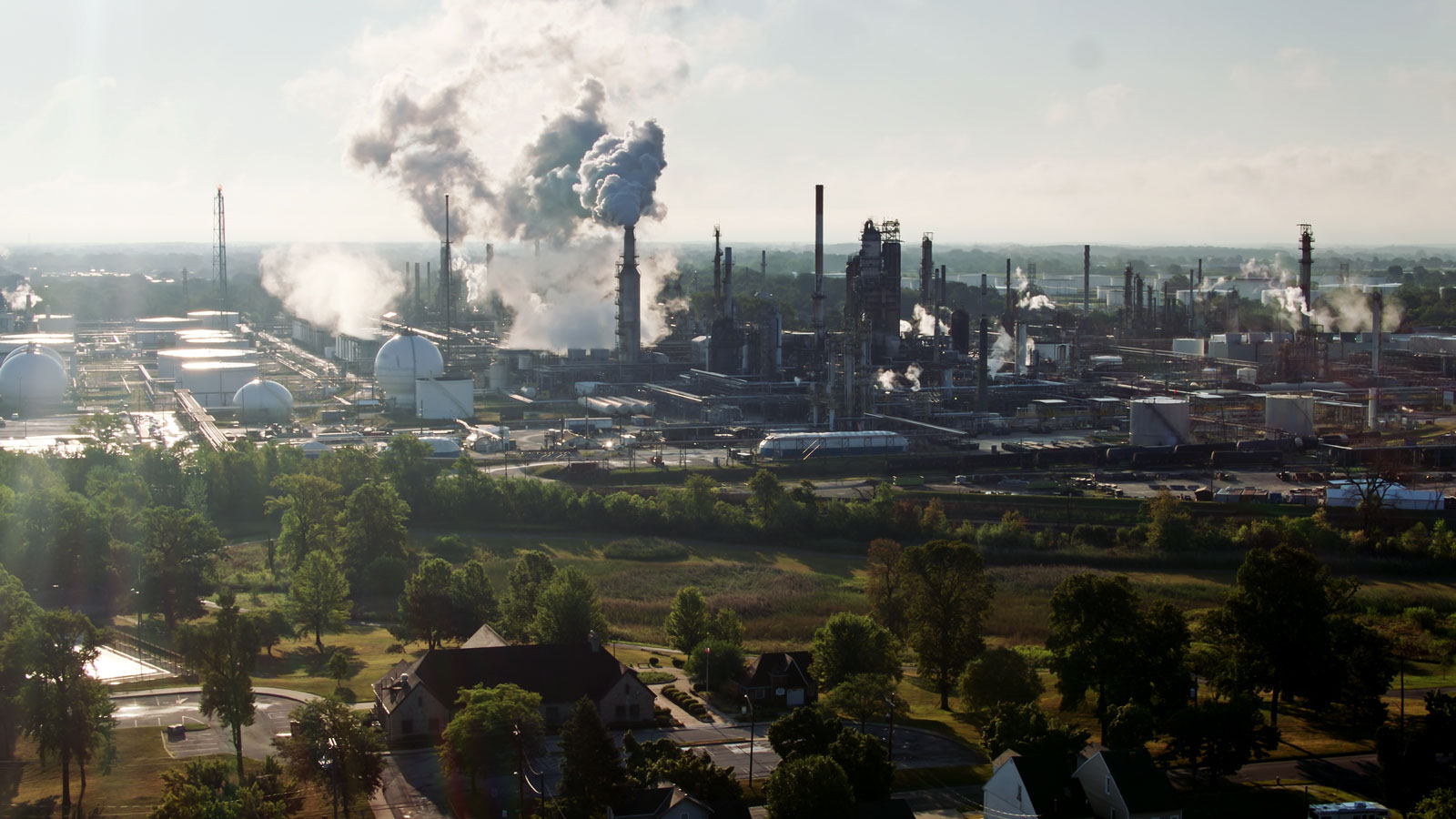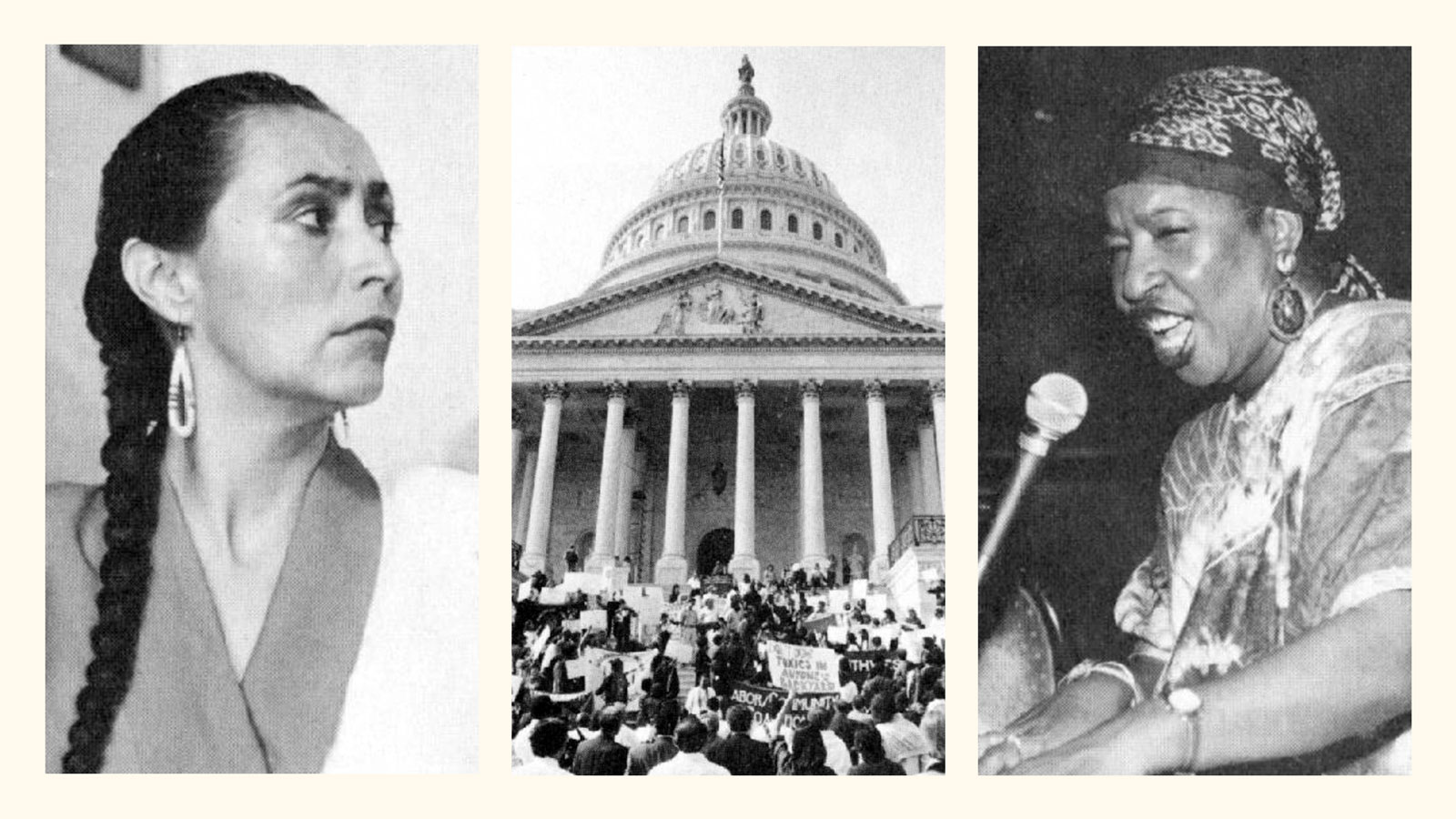Attica Scott and Larry Lambert are state representatives for Kentucky and Delaware, respectively.
We grew up in or near predominantly Black communities surrounded by heavy industry. As children in Louisville, Kentucky, and Claymont, Delaware, we knew something was amiss when so many friends and family members developed dense coughs, asthma, cancer, and other diseases. What we didn’t know at the time is that we were among many low-income communities of color across the country suffering from toxic chemical exposure.
For decades our constituents have lived under the constant threat of explosions or toxic releases in our neighborhoods, never knowing what or when the next disaster will be. Parents must weigh the benefits of allowing their children to go outdoors with the risks of being exposed to harsh chemicals. We recently saw air pollution in our communities lead to disproportionate rates of severe illness and death during this pandemic, a trend that has been observed across the country.
More than 12,000 facilities nationwide, including refineries, water treatment plants, paper mills, and agricultural operations, use or store highly toxic or dangerous chemicals. These high-risk facilities are supposed to be regulated by the Environmental Protection Agency’s Risk Management Plan Rule, known as the chemical disaster rule, but it lacks the teeth to prevent serious harm.
The most glaring weakness in the regulation, which the EPA is updating, is that it does not require facilities to adopt safer chemicals or processes — even when such options are available and affordable. They’re not even required to assess whether safer alternatives exist. For this and other reasons, we are calling on the EPA to put the safety of workers and communities first.
The most glaring weakness in the regulation, which the EPA is updating, is that it does not require facilities to adopt safer chemicals or processes — even when such options are available and affordable.
This week we joined more than 70 elected officials from 16 states and territories nationwide in writing a letter to EPA Administrator Michael Regan urging him to place disaster prevention and environmental justice at the center of an updated rule.
In Kentucky, for example, the Risk Management Plan applies to 209 high-risk facilities. According to a 2018 study, two-thirds of Louisville residents live within three miles of industrial sites that use toxic or flammable substances the EPA deems extremely hazardous. One of the most dangerous is anhydrous ammonia — a colorless gas that causes serious burning of the eyes, nose, and lungs. A revised guideline should require identifying ways to reduce or eliminate the use of such chemicals.
Delaware has 28 high-risk facilities, including the Croda surfactant plant, which produces the highly flammable carcinogen ethylene oxide. On the Sunday after Thanksgiving in 2018, the plant released 2,688 pounds of this chemical less than a mile from a primary school that Representative Lambert’s nephew attended. In the years since, the plant has repeatedly failed emissions tests and has not complied with new regulations.
To mitigate such disproportionate harm to communities, the EPA must require facilities to reduce hazards to the greatest extent possible, replacing the most dangerous chemicals with safer alternatives. It must also mandate other common-sense measures that keep workers and neighbors safe: independent safety audits, third-party investigations after incidents, real-time air monitoring to detect leaks, and communication to ensure that communities understand and are prepared for hazards. None of these are required under the rule.
Some facilities throughout the country have improved, but too many have failed to act. They may say it’s too expensive or that safer alternatives don’t exist. But they are also not incentivized to seek alternatives, since this is not required. Or they don’t want to invest in updating older facilities, even when they may pose a greater safety risk due to aging equipment or outdated processes. As in many industries, most companies will only do what’s legally required, not more.
Facilities also need to be better prepared for natural disasters. For example, a wildfire or hurricane could cause an explosion or major leak; at least one-third of facilities covered by the rule are exposed to such risks, which are increasing dramatically as the climate changes. The EPA must require safer shutdown and startup procedures, and communities must receive timely information about emergency response plans — sirens may be the only warning system, which don’t inform people of specific incident details or what they should do. The rule should require wireless communication in multiple languages to reach affected communities in a timely manner. In Delaware, Representative Lambert has introduced a bill to do just this.
We’re also calling for regulations requiring facilities to include workers and their representatives in disaster prevention planning and response. More than 1 million people work in these places. Workers are injured, killed, or abruptly put out of work as a result of accidents, but they are also uniquely qualified to help prevent them.
Decades of voluntary approaches and lax enforcement by the EPA have led to repeated catastrophes across the country. In just 10 years, such incidents have caused over $2 billion in property damages, more than 17,000 reported injuries, and 59 deaths. They’ve also forced half a million people to evacuate or remain in their homes until it was safe to go outside.
The communities neighboring these facilities face multiple sources of pollution and chemical hazards — even as racial discriminiation, poverty, residential segregation, and poor housing conditions degrade their immune, neuro-endocrine, and cardiovascular systems, compounding the risks.
The EPA has an opportunity to create a rule that will improve the health and safety of people across our country, and acknowledge those communities that have long felt ignored and forgotten. We call on Michael Regan to act on the commitments he and President Biden have made to environmental justice, and to summon the moral courage to save lives.




